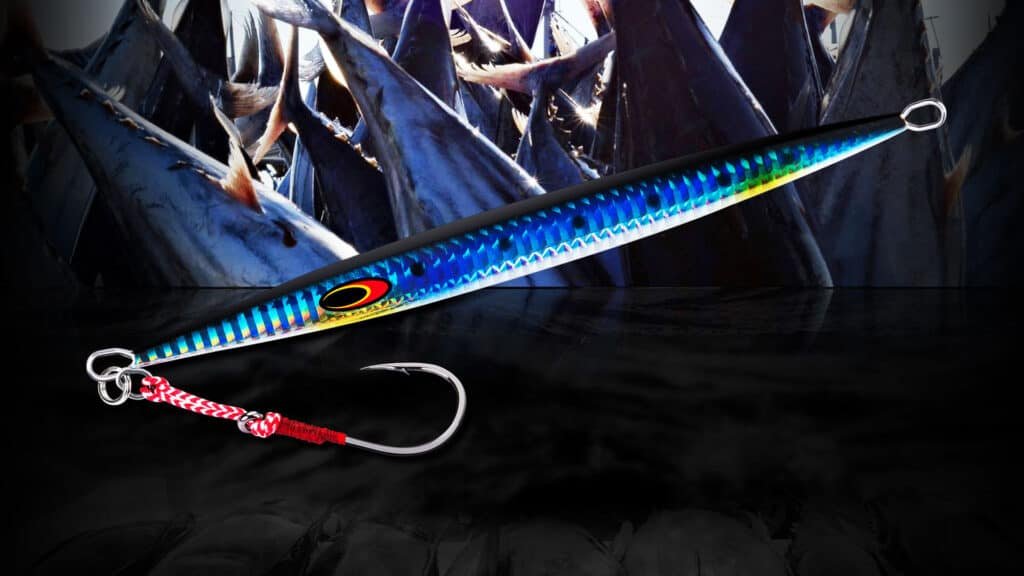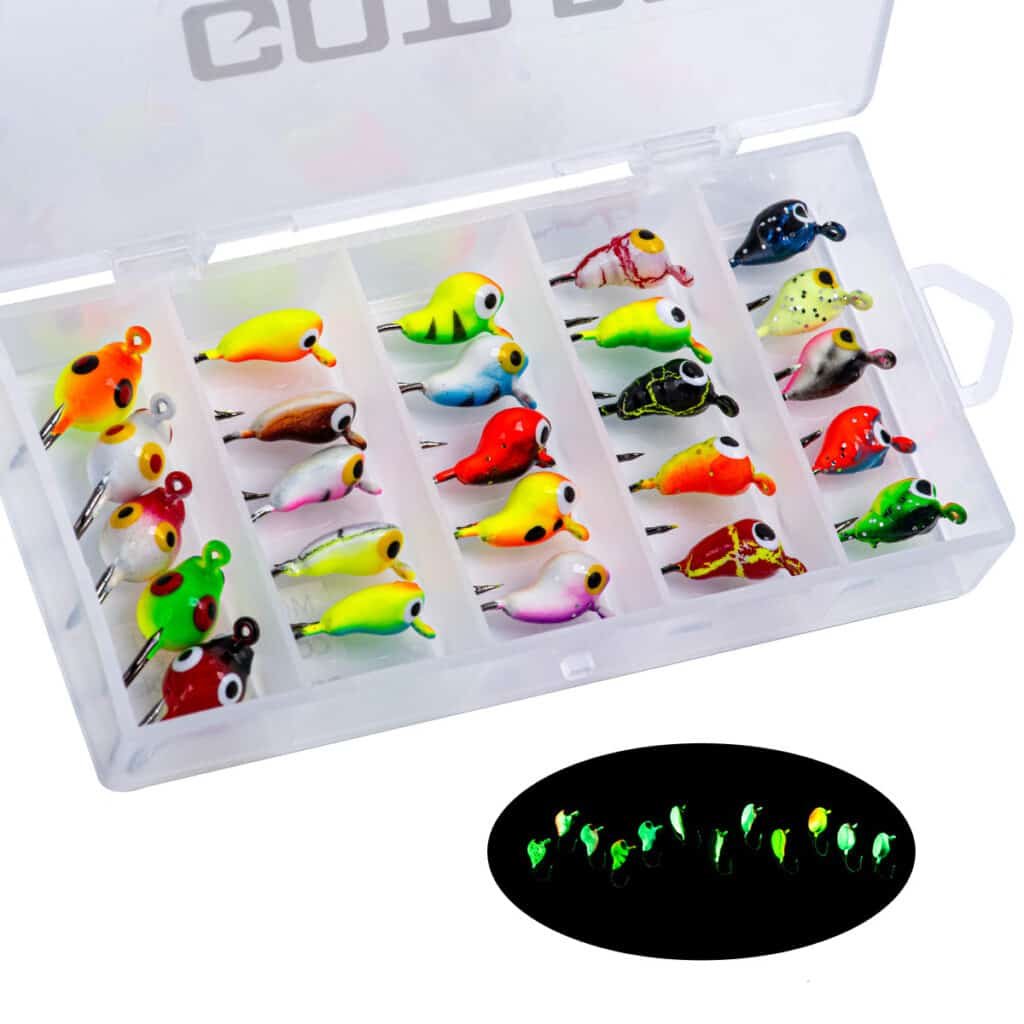I. Introduction
Fishing enthusiasts are always seeking new and effective techniques to land their next big catch, and jigging is one such method that has grown in popularity among anglers. Jigging is a versatile and active fishing technique that involves using a specially designed lure called a jig. This method can be employed in a variety of environments, from the shallows of freshwater lakes to the depths of the open ocean.
One of the reasons jigging has gained traction among anglers is its effectiveness in targeting a wide range of fish species. This technique can be used to catch everything from bass and walleye in freshwater to snapper and amberjack in saltwater. With its adaptability to different depths and conditions, jigging allows anglers to fine-tune their approach to increase their chances of success.
What is jigging?
Jigging is an active fishing method, requiring the angler to repeatedly lift and drop the rod, creating a vertical motion in the water column. This movement causes the jig to imitate the natural movement of a baitfish, crustacean, or other prey, attracting the attention of predatory fish.
Jigging can be done in both freshwater and saltwater environments and is effective for targeting a wide range of fish species, including bass, walleye, snapper, and various pelagic species. The technique can be adapted to different depths and conditions by varying the weight and size of the jig, the speed of the retrieve, and the action imparted by the angler.
II. The Jig Lure
A. Components of Jig Lure
A key component of the jigging technique is, of course, the jig lure itself. The design of a jig lure consists of three main elements: a weighted head, a hook, and body materials that mimic the appearance and movement of prey. Let’s explore each of these components in more detail.
Weighted Head:
The weighted head of a jig lure serves a dual purpose. First, it provides the necessary heft to help the jig sink quickly and reach the desired depth. Second, it contributes to the overall action of the lure as it moves through the water. The weight can be made from lead, tungsten, or other materials, and it often features a molded shape, such as a round or bullet head, to create a specific swimming action.
Hook:
Attached to the weighted head is a hook, which is used to secure the fish once it bites the lure. Hooks can vary in size and style, with options like single, double, or treble hooks, depending on the target species and angler’s preference. The hook may be molded into the weighted head or attached using a split ring or wire loop.

Body Materials:
The body of a jig lure can be made from a variety of materials, both soft and hard. Soft-bodied jigs often consist of rubber or silicone skirts, while hard-bodied jigs may be made of plastic or metal. In addition to these primary materials, jigs can be adorned with feathers, hair, or other materials to enhance their lifelike appearance and movement in the water.
B. Different Types and Styles of Jigs
With a multitude of jig designs available, it’s essential to choose the right one for the specific fishing conditions and target species. Here are some common types and styles of jigs, each with its unique applications:
Ball Head Jigs: These jigs feature a round, weighted head and are suitable for a wide range of species and environments. They are often used with soft plastic bodies, making them versatile and easy to use.
Swim Jigs: Designed with a streamlined, bullet-shaped head, swim jigs are ideal for fishing in areas with heavy cover or vegetation. Their sleek design allows them to move through the water with minimal resistance, attracting species like bass and pike.

Bucktail Jigs: As the name suggests, these jigs have a body made from the hair of a deer’s tail. Bucktail jigs are highly effective in saltwater environments for species such as flounder, striped bass, and snapper.

Flutter Jigs: These jigs have a thin, elongated profile and are designed to flutter and wobble as they sink, imitating the erratic motion of injured baitfish. Flutter jigs are particularly effective for targeting pelagic species like tuna and amberjack in deep water.

Ice Jigs: Specifically designed for ice fishing, these jigs have a unique horizontal profile and are often brightly colored to attract fish in the low-light conditions beneath the ice.

Selecting the right jig for your specific fishing situation will increase your chances of success and help you hone your jigging technique.
III. Jigging Technique
Now that we have a better understanding of the jig lure, it’s time to discuss the actual technique of jigging. Mastering the jigging technique involves understanding the basic motion, how the jig imitates natural prey movement, and adapting the technique to different situations.
A. Basic Jigging Motion
The fundamental motion of jigging consists of lifting and dropping the fishing rod. To start, cast the jig and let it sink to the desired depth. Then, lift the rod tip quickly, causing the jig to rise in the water column. As you lower the rod tip, the jig will fall, mimicking the natural movement of a baitfish or other prey. The key to effective jigging is imparting a lifelike action to the jig while maintaining control over the line and detecting subtle bites from fish.
B. Imitating Natural Prey Movement
The jigging technique is successful because it imitates the movement of natural prey, such as baitfish, crustaceans, or other organisms. The upward and downward motion of the jig, combined with its lifelike appearance, entices predatory fish to strike. To increase your chances of success, observe the behavior of the local prey and try to replicate their movement patterns with your jig.
C. Variations in Technique
Speed of the Retrieve: The speed at which you retrieve the jig can significantly impact its effectiveness. Some fish may prefer a faster, more erratic motion, while others may be attracted to a slower, more deliberate retrieve. Experiment with different speeds to determine what works best for the target species and current conditions.
Action Imparted by the Angler: The action you impart on the jig can also vary depending on the situation. Some anglers may use a series of short, sharp jerks to make the jig dart and twitch, while others may opt for longer, sweeping motions. Try different actions to see what elicits a response from the fish.
Targeting Different Depths: Jigging can be effective at various depths, from shallow water to the deepest parts of the ocean. Adjust the weight of your jig and the length of your leader to target different depths. Keep in mind that fish may be more likely to strike a jig that is presented at their eye level or slightly above, so experiment with depth until you find the most productive zone.
By understanding and adapting your jigging technique to different situations, you can increase your chances of success and enjoy the exciting challenge of jigging for a variety of fish species.
IV. Tips and Tricks for Successful Jigging
A. Choosing the Right Jig Weight and Size for the Conditions
The weight and size of your jig play a critical role in determining how it will perform in different environments. In general, heavier jigs are better suited for deeper water or stronger currents, as they can sink quickly and maintain their position. Lighter jigs, on the other hand, are ideal for shallow water or when a more subtle presentation is required. Experiment with different weights and sizes to find the best match for your specific fishing situation.
B. Matching the Jig to the Target Species and Local Prey
To increase your chances of success, choose a jig that closely resembles the target species’ preferred prey. Pay attention to the size, shape, and color of the local baitfish or other organisms, and select a jig that mimics these characteristics. If you’re unsure what the fish are feeding on, try using a variety of jigs and observe which ones produce the most bites.
C. Detecting Bites and Setting the Hook
One of the challenges of jigging is detecting subtle bites and setting the hook effectively. Keep a close eye on your line and maintain constant contact with the jig as it moves through the water. Be prepared to set the hook quickly when you feel a bite, as fish can often spit out a jig in an instant. Practice your hook-setting technique to ensure you don’t miss any opportunities.
D. Adapting to Changing Conditions
Fishing conditions can change rapidly, from fluctuations in water temperature and clarity to shifts in current and weather patterns. Stay alert and be prepared to adapt your jigging technique as needed. For example, if the water temperature drops, fish may become less active and prefer a slower, more deliberate jigging presentation. Conversely, if the current increases, you may need to use a heavier jig to maintain control and stay in the strike zone.
By keeping these tips and tricks in mind and adapting your jigging approach based on the conditions and target species, you’ll be well on your way to mastering the art of jigging and enjoying the thrill of landing impressive catches.
V. Jigging Safety Considerations
While jigging is an enjoyable and rewarding fishing technique, it’s essential to prioritize safety for both yourself and the environment. Here are some safety considerations to keep in mind when jigging:
A. Using Appropriate Gear
Wearing the right gear can help prevent injuries and ensure a comfortable and enjoyable fishing experience. Consider using gloves to protect your hands from sharp hooks, abrasive lines, and rough fish scales. Additionally, wearing eye protection, such as sunglasses or safety glasses, can shield your eyes from flying hooks or debris, especially during casting and retrieving.
B. Safe Handling of Hooks and Lures
Handling hooks and lures with care is crucial to avoid injuries. When not in use, keep your hooks covered with safety caps or stored securely in a tackle box. When removing a hook from a fish, use a hook remover, pliers, or hemostats to maintain control and avoid injury to both yourself and the fish. If a hook becomes lodged in your skin, seek professional medical help to remove it safely.
C. Environmental and Ethical Considerations
As an angler, it’s essential to respect the environment and adhere to ethical fishing practices. Always follow local regulations, such as size and bag limits, fishing seasons, and restricted areas. If you catch a fish that you do not intend to keep, practice proper catch and release techniques to minimize harm to the fish. Use barbless hooks or crush the barbs on your hooks to make releasing fish easier and less stressful.
Additionally, be mindful of the impact of lead sinkers on the environment, as lead can be toxic to wildlife. Consider using alternative materials, such as tungsten or steel, when possible.
By prioritizing safety and following ethical fishing practices, you can enjoy the excitement of jigging while protecting yourself and preserving our precious aquatic ecosystems.
VI. Conclusion
Throughout this blog post, we’ve explored the exciting world of jigging, highlighting its many benefits and versatility as a fishing technique. Jigging allows anglers to target a wide range of fish species in various environments, from freshwater lakes to the depths of the open ocean. With the right jig and technique, you can effectively imitate the movement of natural prey, enticing fish to strike.
As we’ve discussed, the key to successful jigging lies in understanding the components of a jig lure, mastering the jigging motion, and adapting your approach to different conditions and target species. By following the tips and tricks outlined in this post and prioritizing safety and ethical fishing practices, you’ll be well-equipped to enjoy the thrill of jigging and experience the satisfaction of landing impressive catches.
Whether you’re new to jigging or an experienced angler looking to refine your technique, we encourage you to embrace this dynamic and rewarding method. So grab your fishing gear, head to your favorite fishing spot, and put your jigging skills to the test. Tight lines and happy jigging!

